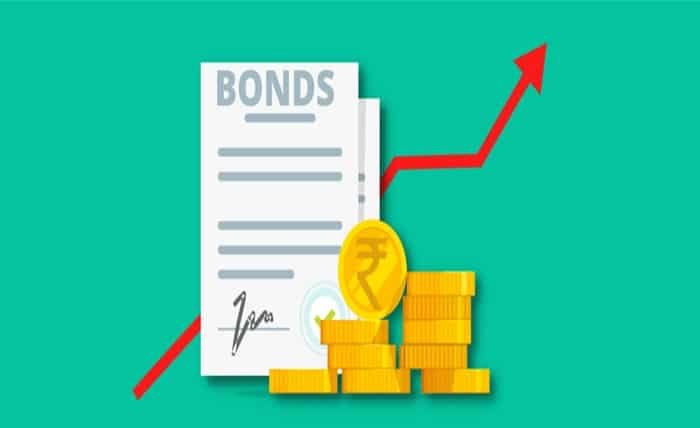How to Invest in Bonds: A Comprehensive Guide

Introduction
Investing in bonds is a popular and effective way to generate income and preserve capital. If you’re looking to diversify your investment portfolio, learning how to invest in bonds can be a valuable strategy. This guide will provide a thorough understanding of bonds, different types of bonds, and practical steps on how to invest in bonds successfully. Whether you’re a novice or a seasoned investor, knowing how to invest in bonds can help you achieve your financial goals.
What Are Bonds?
Bonds are fixed-income securities issued by governments, municipalities, and corporations to raise capital. When you invest in bonds, you’re essentially lending money to the issuer in exchange for periodic interest payments and the return of the bond’s face value at maturity. Understanding how to invest in bonds starts with recognizing the fundamental aspects of bonds, including their types, yields, and credit quality.
Types of Bonds
There are several types of bonds available to investors, each with its own characteristics and risks. Common types include:
- Government Bonds: Issued by national governments, these are generally considered low-risk investments. U.S. Treasury bonds are a prime example.
- Municipal Bonds: Issued by states, cities, or local governments, these bonds often come with tax advantages.
- Corporate Bonds: Issued by companies, these bonds typically offer higher yields but come with greater risk compared to government bonds.
- Convertible Bonds: These bonds can be converted into a predetermined number of the issuer’s equity shares, providing potential for capital appreciation.
Understanding these types is crucial when learning how to invest in bonds, as each type has its own risk and return profile.
Why Invest in Bonds?
Investing in bonds can offer several advantages. They provide a steady stream of income through interest payments and are generally less volatile than stocks. Bonds also play a role in diversifying an investment portfolio, helping to balance risk. Knowing how to invest in bonds allows you to leverage these benefits to create a more stable and predictable investment strategy.
How to Choose the Right Bonds
Choosing the right bonds involves assessing various factors, including:
- Credit Quality: Higher-rated bonds (e.g., AAA or AA) are generally safer but offer lower yields. Lower-rated bonds (e.g., junk bonds) may offer higher returns but come with increased risk.
- Maturity Date: The length of time until the bond matures can impact its price sensitivity to interest rate changes. Short-term bonds typically have less price fluctuation than long-term bonds.
- Interest Rates: The bond’s coupon rate and the prevailing interest rates can affect its attractiveness. Higher interest rates generally lead to lower bond prices.
When you know how to invest in bonds, you’ll be able to analyze these factors effectively and select bonds that align with your investment goals.
How to Buy Bonds
Buying bonds can be done through various channels:
- Direct Purchase: You can buy bonds directly from the government or issuing entities, often at auction or through a direct purchase program.
- Brokerage Accounts: Many investors purchase bonds through brokerage accounts, which offer access to a wide range of bonds and professional guidance.
- Bond Funds: If you prefer a diversified approach, bond funds and ETFs (Exchange-Traded Funds) provide exposure to a broad range of bonds through a single investment.
Understanding how to invest in bonds involves knowing which method suits your investment style and goals.
Strategies for Bond Investing
Successful bond investing requires a strategic approach. Some effective strategies include:
- Laddering: This strategy involves buying bonds with different maturities to manage interest rate risk and ensure liquidity.
- Barbell Strategy: This approach focuses on holding short-term and long-term bonds while avoiding intermediate-term bonds to benefit from different interest rate environments.
- Bullet Strategy: Investing in bonds that all mature at the same time can align with specific financial goals, such as funding a major expense.
Knowing how to invest in bonds with these strategies can help you manage risk and optimize returns.
Risks of Bond Investing
Investing in bonds is not without risks. Key risks include:
- Interest Rate Risk: As interest rates rise, bond prices typically fall, impacting the value of your investments.
- Credit Risk: The issuer’s creditworthiness affects the likelihood of timely interest payments and principal repayment.
- Inflation Risk: Inflation can erode the purchasing power of bond interest payments and principal.
Understanding these risks is essential when learning how to invest in bonds to make informed decisions and manage potential downsides.
How to Monitor Bond Investments
Regular monitoring of your bond investments helps ensure they align with your financial objectives. Tools and resources available at investment platforms and financial news websites provide updates on bond performance, interest rate changes, and credit ratings. Keeping track of these factors will help you adjust your strategy as needed and stay on top of your bond investments.
Tax Considerations for Bond Investors
Bonds can have different tax implications based on their type and where they are issued. For example:
- Government Bonds: Interest is usually subject to federal income tax but exempt from state and local taxes.
- Municipal Bonds: Often offer tax-free interest at the federal level, and sometimes at the state or local level if you live in the issuing state.
- Corporate Bonds: Interest is fully taxable at the federal and state levels.
Understanding the tax considerations for bonds can enhance your knowledge of how to invest in bonds in a tax-efficient manner.
Conclusion
Learning how to invest in bonds is a crucial skill for building a diversified and balanced investment portfolio. By understanding the different types of bonds, investment strategies, and potential risks, you can make informed decisions that align with your financial goals. Whether you’re looking for steady income, portfolio diversification, or a lower-risk investment option, bonds offer a versatile and valuable addition to your investment strategy.
FAQs
1. What are bonds and how do they work?
Bonds are fixed-income securities where you lend money to an issuer in exchange for periodic interest payments and the return of the principal at maturity. Learning how to invest in bonds involves understanding these mechanics.
2. What are the different types of bonds?
The main types of bonds include government bonds, municipal bonds, corporate bonds, and convertible bonds. Each type has distinct characteristics and risks, which are important to understand when you know how to invest in bonds.
3. How do I choose the right bonds for my portfolio?
Choosing the right bonds involves evaluating factors like credit quality, maturity date, and interest rates. Properly assessing these elements is key to successful bond investing.
4. What are some strategies for investing in bonds?
Effective bond investment strategies include laddering, the barbell strategy, and the bullet strategy. These approaches can help manage risk and optimize returns.
5. What risks should I be aware of when investing in bonds?
Key risks include interest rate risk, credit risk, and inflation risk. Understanding these risks is crucial for making informed decisions and managing your bond investments effectively.




